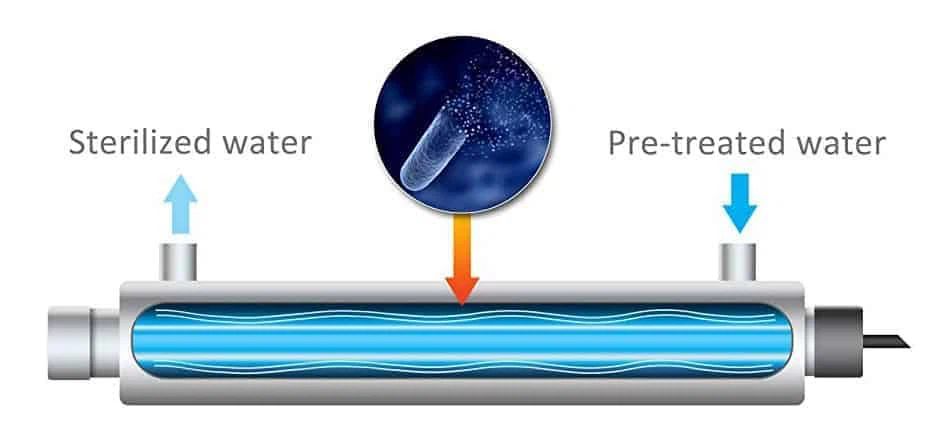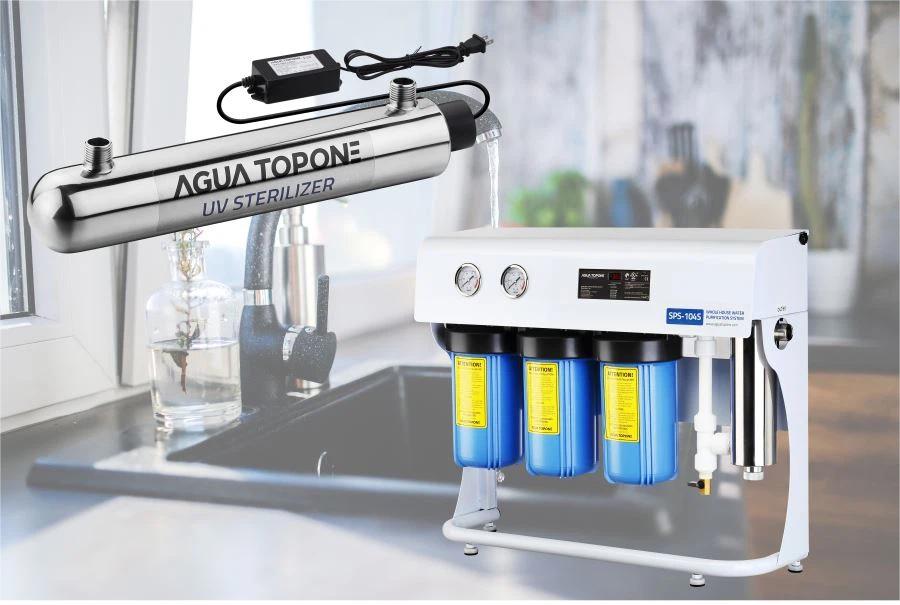In addition to removing dissolved organic matter, suspended solids, and certain inorganic solutes, the process of water purification must ensure that possibly dangerous pathogens are rendered inactive. In the absence of a method to effectively deal with parasites, bacteria, and viruses, water purification is certainly incomplete, and the H2O should not be regarded as safely potable.
- Advantages
Whereas chemicals may be used as a germicide, the use of UV treatment in an effective water purification process enjoys several advantages over substances like chlorine: UV light will not adversely affect the smell and taste of water; there is no need to store chemicals which, in a concentrated form, are hazardous, and; there is no chance of accidental overdosing the water.

- UV Light and Cellular DNA
Ultraviolet light is a higher energy wavelength than visible light, but it falls short of the energy associated with X-rays. The wavelength’s energy, however, is enough to penetrate nucleic acid.
This means that UV radiation reaches into a cell’s nucleus and damages the DNA molecule. With a damaged nucleus, the cell’s DNA is no longer able to function properly, thereby prohibiting cellular reproduction. In a water purification system, then, UV radiation does not kill a pathogen but rather ensures that it will not reproduce and cause an infection.
In practical terms, this simply means that parasites, bacteria, and viruses are unable to spread in a person’s body as they are unable to reproduce.
It should be noted, however, that cells may have repair mechanisms that could reverse the damage done to cellular DNA if enough UV radiation has not been applied. This point highlights one of the most important elements to bear in mind when considering or implementing a UV filter as a means of sterilization.

- That is Turbidity.
The water undergoing sterilization needs to be clear. The UV light must thoroughly penetrate the water in order to reach each pathogen with enough energy to disrupt its DNA and cause sufficient damage to prevent cell repair mechanisms from doing their job.
There are many ways to filter water in the purification process. The method chosen is, of course, highly dependent upon the nature of the influent/raw water and the end purpose (here being potable water). The filtration must guarantee that the water reaching the UV sterilization chamber/channel is free of anything that lessens the clarity (salts, particulates, dissolved organic matter, etc.).
- Efficacy
The efficacy of UV radiation as a disinfectant in water purification is a function of the intensity of the UV light (i.e. the actual bulb in the unit), the amount of time during which a volume of water is exposed to UV radiation, the clarity of the water entering the unit, and the maintenance of the unit. Proper maintenance must include not only cleaning the unit but also bulb replacement.
Specializing in UV water purification and disinfection solutions, PolexTech designs, and engineers all product solutions for the whole home, commercial, industrial, and municipal, We provide a “one-stop” solution for all your water purification and disinfection needs.
If you want to learn more about PolexTech UV Water Purification System, welcome to check on www.polextech.com, or please contact us requesting for catalogue. If you have some ideas to share and discuss together, please feel free to comment as well, PolexTech team members will get back to you within 12 working hours. Thank you, have a nice day.



